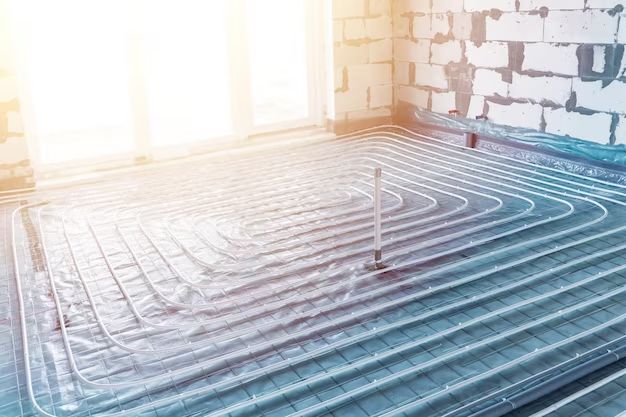Underfloor heating systems have become increasingly popular in recent years as an energy efficient and comfortable way to heat homes and buildings. While these systems have many benefits, there are also some potential downsides to consider before installing underfloor heating.
Page Contents
Upfront Costs
One of the main downsides of underfloor heating is that it can be expensive to install initially. The cost will vary depending on the type of system and size of the area being heated, but expect to pay more upfront compared to traditional radiators. Here are some typical installation costs:
| Type of Underfloor Heating | Average Cost (per m2) |
|---|---|
| Water-based (wet system) | $80 – $110 |
| Electric wire system | $90 – $130 |
| Electric mat system | $100 – $150 |
This upfront investment means underfloor heating is more suited to new builds or major renovation projects. However, the running costs are lower which can make it worthwhile in the long run.
Slow Response Time
Another downside is that underfloor systems are slow to respond to temperature changes. The thermal mass of the floor takes time to heat up when turning the system on, and retains heat for a while after it’s turned off. This makes underfloor heating great for providing constant background warmth, but less responsive for quickly heating an area.
For example, it could take several hours for an underfloor system to heat up a room from cold. In contrast, a forced air furnace or baseboard heaters provide faster heating on demand. Slow response times mean you have to run underfloor heating constantly to maintain warmth, which can lead to higher running costs.
Limited Temperature Control
Underfloor heating provides a very even, uniform warmth throughout the floor. However, it can be more difficult to adjust temperatures in different zones. For example, you may want an area like a bathroom warmer than a living room.
This requires careful planning and zoning. Even with different controls, underfloor systems still warm the entire floor area to some extent. There are also limits on how hot an underfloor system can run to avoid overheating. Most systems max out around 85°F.
Physical Restrictions
Installing underfloor heating systems places some physical restrictions on the floor space:
- Floor coverings need to conduct heat well. Carpet and thick rugs can impede heat transfer.
- Avoid placing furniture, shelves, and other items directly on the floor to allow heat to circulate.
- Don’t pierce the flooring if pipes or electric wires are present.
This limits future changes like flooring replacements or layouts. Areas like bathrooms may also need special waterproofing.
Troubleshooting and Repairs
As the heating system is concealed under the floor, it can make identifying and repairing any faults more challenging:
- Water-based wet systems with pipes are prone to leaks if damaged or improperly installed.
- Electrical faults in wire/mat systems may require removing flooring to access.
- Can be difficult to locate exact problem areas.
- Professional tradespeople needed for repairs and maintenance.
While underfloor heating is generally reliable, any work needed on the system is likely to be more invasive than a regular wall-mounted radiator.
Higher Installation Risks
Installing an underfloor heating system requires major renovation work, including:
- Ripping up existing flooring/foundations.
- Laying extensive new pipework or wiring.
- Careful concrete floor installation for water systems.
- Meticulous planning and zone layouts.
There are more opportunities for mistakes during installation compared to other heating methods. Using unqualified installers heightens this risk. Problems like leaks or improper wiring may only become evident after flooring is laid.
Conclusion
Underfloor heating can provide even, comfortable warmth, but also comes with drawbacks like upfront costs and slower response times. Consider these downsides carefully before deciding if it’s the right choice for your situation. Seek professional advice on appropriate system sizing and zoning.
While the installation process involves some extra precautions, underfloor heating offers long-term benefits like energy efficiency and design flexibility. Address any repairs promptly and perform regular maintenance to maximize system life span. Overall, underfloor heating creates a warm and welcoming environment when designed and installed properly.
